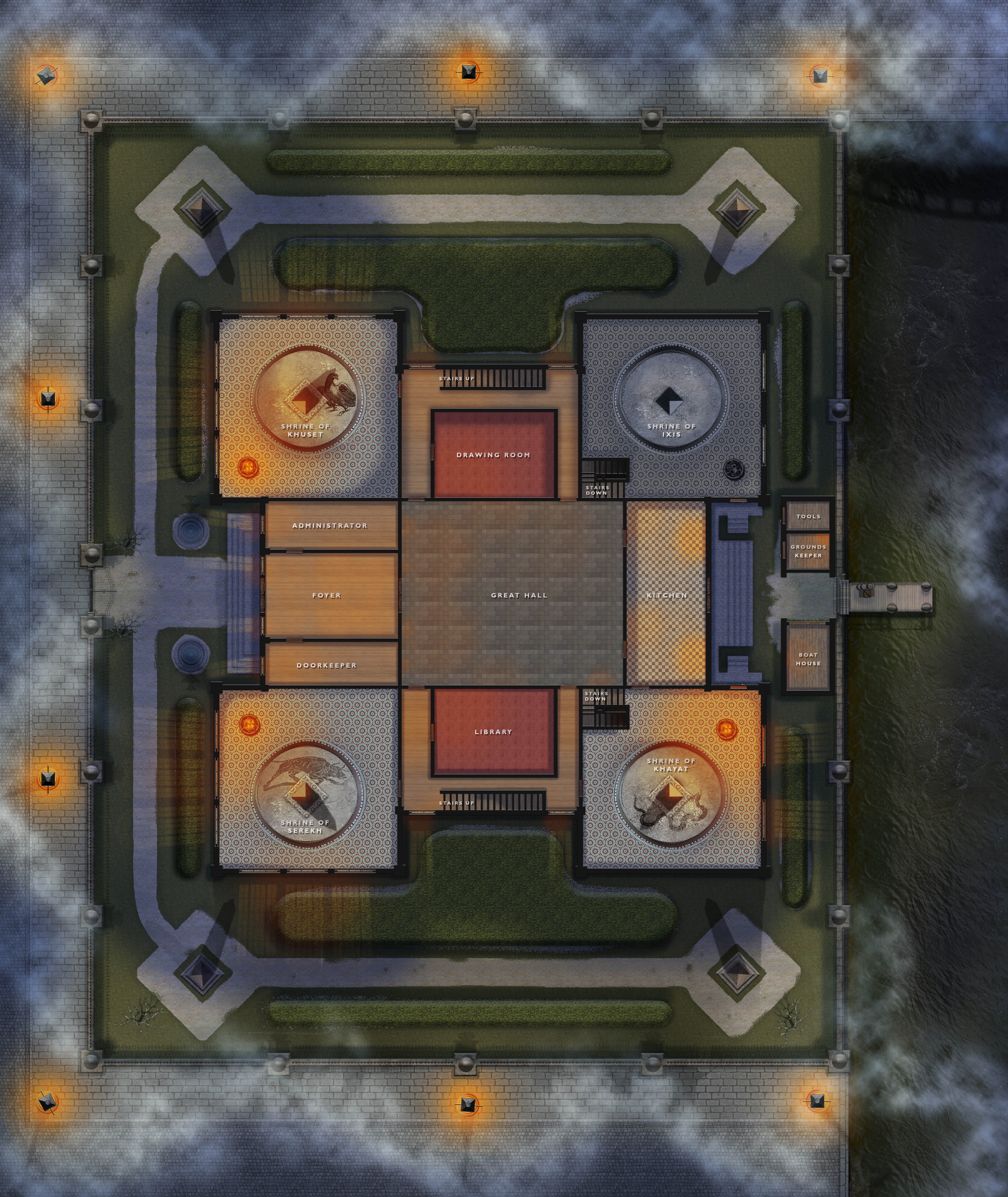
Here’s a sneaky peak at a four-level map I’m making of the Red Sash Sword Academy. I have a fondness for highly rendered maps to set mood and tone, so I tried to balance that against leaving blank spaces for improvisation. Kind of a battlemap crossed with a Cluedo (Clue) board.

The lightning/shadow effects are really cool. Do you use PS/a pure graphic program for this or a specialized tool?
I’m a big fan of a cool map (played a the kender in Dragonlance, maybe that’s the origin of this obsession) but very unsure how to incorporate them in Blades because of the mentioned blank spaces. I just love the moment when player says “Yeah, there’s sure a X here”, with X being very cool and not there until now. So, if I have to choose between cool map vs. cool moment I prefer the moment all the time.
Stefan Struck A good point! I don’t have enough experience with the game to answer – maybe someone else can chime in. It is certainly something I’m aware of too. I know that in Friends at the Table, Austin Walker had a simple floorplan for at least one heist and it seemed to work fine balancing player improv vs. a sense of discovery.
For me, with a group that come from a long-running D&D campaign, this is a compromise and a middle ground between a play style we enjoy and the benefits of a more spontaneous system like BITD. I’m hoping it’s worth the trade-offs, but we’ll see!
With Roll20 and dynamic lighting, there is something very exciting and heist-y about creeping along a corridor past a guard and seeing what’s in the next room.
I suppose I would simply try and be very liberal with the map and open to drawing on changes with the Roll20 paint tool as needed. Take the map as the plans or blueprints of it how it SHOULD be in theory, but who knows what the players will really encounter – maybe a room has been changed, a corridor altered, a balcony where’s there none on the plans? The map is here to help ground the action in some sense of materiality or concrete reality, but it doesn’t have to be the definitive be-all and end-all.
Tim Denee Sounds like a plan! Good luck! 🙂
Was that map created using roll20 + dynamic lightning or do you use something else?
Stefan Struck Cheers! I’ll certainly share how I get on.
I haven’t set it up in Roll20 yet – this is all photoshop.
Tim Denee Wow, I’m impressed, especially about the light effect from the corner rooms. Keep up the good work and have a nice game 🙂
I love it! Maps, if you have them, can be very nice to give everyone a shared idea of the space you’re currently in. As long as you keep things open for improv, I think they can really enhance the atmosphere!